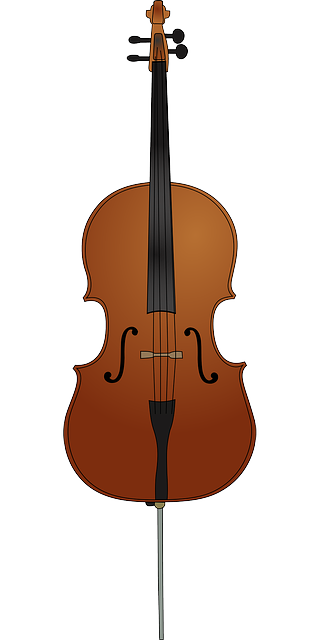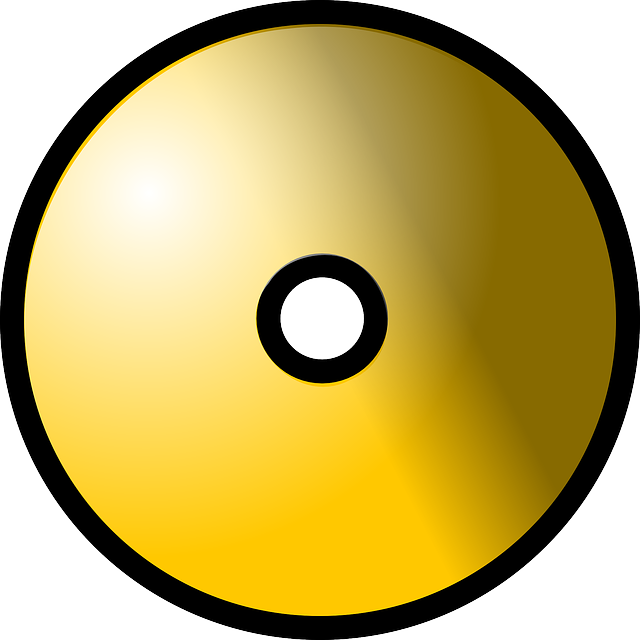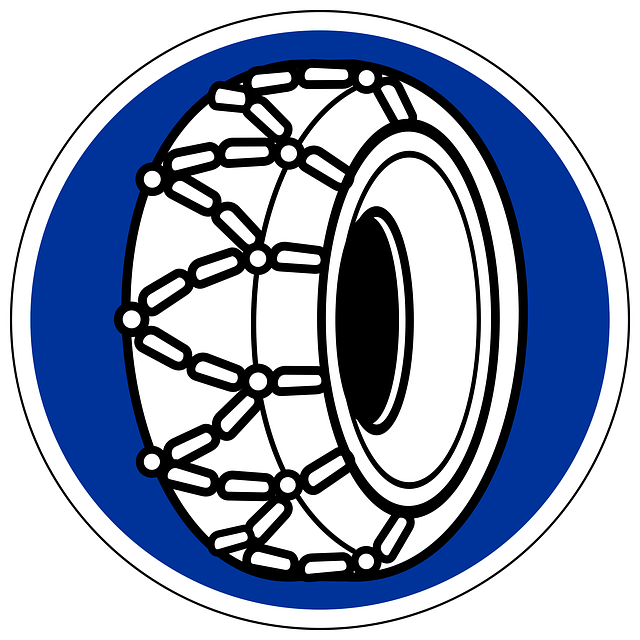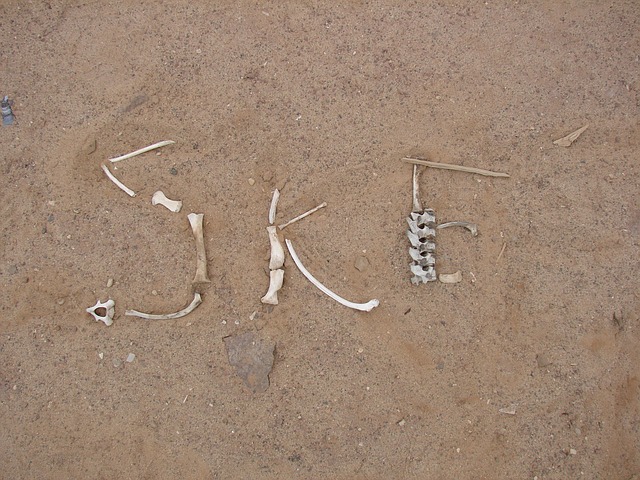نواة الرياضيات المشهجرة في الولايات المتحدة الأمريكية
الأعداد
تفسير علاقات التناسب Interpreting Proportional Relationships http://nsdl.org/browse/commcore/math/?verb=GetRecord&n=10&s=0&q=&id=HS.N&recordID=MARCC-000-000-000-081 This series of activities allows students to experiment to discover proportional relationships This activity has three objectives: "(1) Students generate data by translating information from a verbal problem, record results in tabular form, and write a rule for the number patterns discovered in the table. (2) Students plot a set of data points and connect the points to form a graph of the related rule. (3) Students learn to discriminate proportional from nonproportional relationships on the basis of formulas and graphs used to describe these situations." It consists of four worksheets. The first allows students see the proportional relationship between surface area of Cuisenaire robs and develop formulae to express that relationship. The second worksheet asks students to graph the data they collected and determine if the relationships are proportional or nonproportional. The third and fourth sheets give students extra practice using the steps they have learned to determine proportionality in two different problems. This site gives a helpful explanation of the pedagogical choices present in the lesson as well as answers and steps to solving the problems presented. http://www.cehd.umn.edu/rationalnumberproject/89_3.html التوابع Exploring Linear Functions: Representational Relationships http://nsdl.org/browse/commcore/math/?verb=GetRecord&n=10&s=0&q=&id=HS.F&recordID=MARCC-000-000-000-078 http://standards.nctm.org/document/eexamples/chap7/7.5/ This "series of explorations based on two linked representations of linear functions" allows students to manipulate the values of m and b in linear function f(x) = mx + b and get a visual understanding of the results. This particular site guides student through this exploration by asking them to perform five different manipulations and describe the changes that occur.
Title Linear Functions URL http://www.analyzemath.com/function/linear_functions.html Descriptions In this tutorial, "Linear functions of the form f(x) = a x + b and the properties of their graphs are explored interactively using an applet." The applet allows students to manipulate variables to discover the changes in intercepts and slope of the graphed line. There are six questions for students to answer, exploring the applet and observing changes. The question answers are included on this site. http://nsdl.org/browse/commcore/math/?verb=GetRecord&n=10&s=0&q=&id=HS.F&recordID=MARCC-000-000-000-091
Title Linear Models URL http://www.math.montana.edu/frankw/ccp/modeling/discrete/linear/learn.htm Descriptions This site uses linear models to demonstrate the change in bird populations on a barren island over time, supply and demand, and the natural cleaning of a polluted lake by fresh water over time. The problems are laid out and turned into both graphic and equation form in order to understand the rate of change happening in each scenario. There are also links to previously covered materials that can help student review material from past math lessons. http://nsdl.org/browse/commcore/math/?verb=GetRecord&n=10&s=0&q=&id=HS.F&recordID=MARCC-000-000-000-092
Title Distance-Time Graphs URL http://library.thinkquest.org/C0110840/dtgraph.htm Descriptions This site describes a distance-time graph, how it compares to the equation for a line, and uses equations to calculate speed and slope. The steps and relationships are clear and specific, and the problems are solved using both graphic and computational methods. http://nsdl.org/browse/commcore/math/?verb=GetRecord&n=10&s=0&q=&id=HS.F&recordID=MARCC-000-000-000-089
Title Writing Linear Equations URL http://www.ck12.org/flexr/chapter/4475 Descriptions This chapter covers linear equations in slope-intercept form and point-slope form, standard form for linear equations, equations of parallel and perpendicular lines, and solving real world problems using linear models. There are a number of example questions (with solutions) covering each aspect for educators to either review with students or let students tackle on their own. Each section also ends with review problems for students to solve. http://nsdl.org/browse/commcore/math/?verb=GetRecord&n=10&s=0&q=&id=HS.F&recordID=MARCC-000-000-000-027
Title Linear Functions and Slope URL http://www.learner.org/courses/learningmath/algebra/session5/ Descriptions This session on linear function and slope contains five parts, multiple problems and videos, and interactive activities geared to help students recognize and understand linear relationships, explore slope and dependent and independent variables in graphs of linear relationships, and develop an understanding of rates and how they are related to slopes and equations. Throughout the session, students use spreadsheets to complete the work, and are encouraged to think about the ways technology can aid in teaching and understanding. The solutions for all problems are given, and many allow students to have a hint or tip as they solve. There is even a homework assignment with four problems for students after they have finished all five parts of the session.
http://nsdl.org/browse/commcore/math/?verb=GetRecord&n=10&s=0&q=&id=HS.F&recordID=MARCC-000-000-000-075
Title Proportional Reasoning URL http://www.learner.org/courses/learningmath/algebra/session4/ Descriptions In this session, a special kind of functional relationship is explored: the proportional relationship. Students develop proportional reasoning skills by comparing quantities, looking at the relative ways numbers change, and thinking about proportional relationships in linear functions. This lesson has four objectives. Students learn to: differentiate between relative and absolute meanings of "more" and determine which of these is a proportional relationship, compare ratios without using common denominator algorithms, differentiate between additive and multiplicative processes and their effects on scale and proportionality, and interpret graphs that represent proportional relationships or direct variation.
http://nsdl.org/browse/commcore/math/?verb=GetRecord&n=10&s=0&q=&id=HS.F&recordID=MARCC-000-000-000-023
Title Linear Equations URL http://math.fullerton.edu/hshultz/mrp/Linear_Equations.PDF Descriptions This unit is a full lesson on linear equations with many problems for students and notes to teachers embedded. It begins with a question which illustrates the eight points students most often do not understand in order to answer it correctly. The unit is divided into ten sections: Characteristics of Linear Equations, Tables of Values for Graphing, Using Intercepts for Graphing, Using Slope-Intercept Form with Graphs, Families of Linear Equations, Graphing Linear vs. Non-Linear Equations, Creating, Graphing and Using Linear Equations, Simple System of Equations, What Went Wrong? (in which students observe how another student incorrectly answered a question), and Exploring with a Graphing Calculator. This is an excellent unit, used whole or in its parts, for students beginning with linear equations.
http://nsdl.org/browse/commcore/math/?verb=GetRecord&n=10&s=0&q=&id=HS.F&recordID=MARCC-000-000-000-093
الاحتمالات والإحصاء
Title Linear Functions URL http://www.analyzemath.com/function/linear_functions.html Descriptions In this tutorial, "Linear functions of the form f(x) = a x + b and the properties of their graphs are explored interactively using an applet." The applet allows students to manipulate variables to discover the changes in intercepts and slope of the graphed line. There are six questions for students to answer, exploring the applet and observing changes. The question answers are included on this site.
http://nsdl.org/browse/commcore/math/?verb=GetRecord&n=10&s=0&q=&id=HS.S&recordID=MARCC-000-000-000-091
Title Modeling Linear Relationships URL http://www.learner.org/courses/learningmath/data/session7/part_c/ Descriptions In this lesson, students use data collected comparing height and arm span and create a scatter plot from the bivariate data. In the first section, How Square Can You Be?, students look at measurement comparisons between the height and arm span of 24 people. The second section, Analyzing the Differences, asks students to look at the data again to answer questions about proportion of height to arm span, such as who is square and who is rectangular. The third section, Using a Scatter Plot, has students analyze the same data on a scatter plot with the line representing Height = Arm Span. There are questions for student to answer independently, but hints are provided.
http://nsdl.org/browse/commcore/math/?verb=GetRecord&n=10&s=0&q=&id=HS.S&recordID=MARCC-000-000-000-123
Title Distance-Time Graphs URL http://library.thinkquest.org/C0110840/dtgraph.htm Descriptions This site describes a distance-time graph, how it compares to the equation for a line, and uses equations to calculate speed and slope. The steps and relationships are clear and specific, and the problems are solved using both graphic and computational methods. http://nsdl.org/browse/commcore/math/?verb=GetRecord&n=10&s=0&q=&id=HS.S&recordID=MARCC-000-000-000-089
Title Writing Linear Equations URL http://www.ck12.org/flexr/chapter/4475 Descriptions This chapter covers linear equations in slope-intercept form and point-slope form, standard form for linear equations, equations of parallel and perpendicular lines, and solving real world problems using linear models. There are a number of example questions (with solutions) covering each aspect for educators to either review with students or let students tackle on their own. Each section also ends with review problems for students to solve.
http://nsdl.org/browse/commcore/math/?verb=GetRecord&n=10&s=0&q=&id=HS.S&recordID=MARCC-000-000-000-027
Title Linear Functions and Slope URL http://www.learner.org/courses/learningmath/algebra/session5/ Descriptions This session on linear function and slope contains five parts, multiple problems and videos, and interactive activities geared to help students recognize and understand linear relationships, explore slope and dependent and independent variables in graphs of linear relationships, and develop an understanding of rates and how they are related to slopes and equations. Throughout the session, students use spreadsheets to complete the work, and are encouraged to think about the ways technology can aid in teaching and understanding. The solutions for all problems are given, and many allow students to have a hint or tip as they solve. There is even a homework assignment with four problems for students after they have finished all five parts of the session.
http://nsdl.org/browse/commcore/math/?verb=GetRecord&n=10&s=0&q=&id=HS.S&recordID=MARCC-000-000-000-075
الجبر
Title The Yo-Yo Problem: Solving Linear Equations URL http://www.pbs.org/teachers/mathline/lessonplans/hsmp/yoyo/yoyo_procedure.shtm Descriptions In this lesson, students explore linear patterns, write a pattern in symbolic form, and solve linear equations using algebra tiles, symbolic manipulation, and the graphing calculator. The lesson starts with the presentation of the yo-yo problem. Students then complete a hands-on activity involving a design created with pennies that allows them to explore a linear pattern and express that pattern in symbolic form. Algebra tiles are introduced as the students practice solving linear equations. Working from the concrete to the abstract is especially important for students who have difficulty with mathematics, and algebra tiles help students make this transition. In addition to using algebra tiles, students also use symbolic manipulation and the graphing calculator. Finally, the students return to solve the yo-yo problem. A feature of this lesson is the effective use of peer tutors in this inclusion classroom. Student worksheets are included to print.
http://nsdl.org/browse/commcore/math/?verb=GetRecord&n=10&s=0&q=&id=HS.A&recordID=MARCC-000-000-000-026 Title Simultaneous Linear Equations URL http://www.themathpage.com/alg/simultaneous-equations.htm Descriptions This page presents simultaneous linear equations in three sections: Section 1 demonstrates the methods of addition and substitution; Section 2 presents more examples and Cramer's Rule; and Section ثلاثة demonstrations how to solve a system of three equations in three unknowns. There are plenty of illustrations to help students understand and step-by-step methods of finding solutions. Solution steps are covered until they are moused over after a problem is presented.
http://nsdl.org/browse/commcore/math/?verb=GetRecord&n=10&s=0&q=&id=HS.A&recordID=MARCC-000-000-000-082 Title Graphing Linear Equations URL http://www.purplemath.com/modules/graphlin.htm Descriptions From Elizabeth Stapel at Purplemath, this module helps students understand how to graph linear equations by making a neat T-chart, finding plot points, plotting points, and drawing the line. There are four pages in this module with clear, systematically presented, step-by-step instructions and plenty of examples and illustrations to help students along.
http://nsdl.org/browse/commcore/math/?verb=GetRecord&n=10&s=0&q=&id=HS.A&recordID=MARCC-000-000-000-033 Title Linear Equations in One Variable URL http://www.wtamu.edu/academic/anns/mps/math/mathlab/int_algebra/int_alg_tut7_lineq.htm Descriptions This lesson introduces students to linear equations in one variable; shows how to solve them using addition, subtraction, multiplication, and division properties of equalities; and allows them to determine if a value is a solution, if there are infinitely many solutions, or no solution at all. The site contains an explanation of equations and linear equations, how to solve equations in general, and a strategy for solving linear equations. The lesson also explains contradiction (an equation with no solution) and identity (an equation with infinite solutions). There are five practice problems at the end for students to test their knowledge with links to answers and explanations of how those answers were found.
http://nsdl.org/browse/commcore/math/?verb=GetRecord&n=10&s=0&q=&id=HS.A&recordID=MARCC-000-000-000-106 Title Solving Linear Inequalities URL http://www.purplemath.com/modules/ineqlin.htm Descriptions From Elizabeth Stapel at Purplemath, this module helps students understand how to solve linear inequalities with an introduction to the topic using both inequality notation and a graphic representation to express the inequality. This section also briefly covers set notation and interval notation. The next two pages of the site give elementary examples and advanced examples. The elementary examples are simple problems with solutions and an interactive widget on which students can try their knowledge. The advanced examples include real-world word problems in physics, finance, and chemistry that require students to identify and solve the linear inequality.
http://nsdl.org/browse/commcore/math/?verb=GetRecord&n=10&s=0&q=&id=HS.A&recordID=MARCC-000-000-000-034 Title Writing Linear Equations URL http://www.ck12.org/flexr/chapter/4475 Descriptions This chapter covers linear equations in slope-intercept form and point-slope form, standard form for linear equations, equations of parallel and perpendicular lines, and solving real world problems using linear models. There are a number of example questions (with solutions) covering each aspect for educators to either review with students or let students tackle on their own. Each section also ends with review problems for students to solve.
http://nsdl.org/browse/commcore/math/?verb=GetRecord&n=10&s=0&q=&id=HS.A&recordID=MARCC-000-000-000-027 Title Linear Functions and Slope URL http://www.learner.org/courses/learningmath/algebra/session5/ Descriptions This session on linear function and slope contains five parts, multiple problems and videos, and interactive activities geared to help students recognize and understand linear relationships, explore slope and dependent and independent variables in graphs of linear relationships, and develop an understanding of rates and how they are related to slopes and equations. Throughout the session, students use spreadsheets to complete the work, and are encouraged to think about the ways technology can aid in teaching and understanding. The solutions for all problems are given, and many allow students to have a hint or tip as they solve. There is even a homework assignment with four problems for students after they have finished all five parts of the session.
http://nsdl.org/browse/commcore/math/?verb=GetRecord&n=10&s=0&q=&id=HS.A&recordID=MARCC-000-000-000-075 Title Linear Inequalities URL http://www.wtamu.edu/academic/anns/mps/math/mathlab/int_algebra/int_alg_tut10_linineq.htm Descriptions Upon completing this lesson, student should be able to use the addition, subtraction, multiplication, and division properties of inequalities to solve linear inequalities; write the answer to an inequality using interval notation; and draw a graph to give a visual answer to an inequality problem. The lesson begins with explanations of inequality signs and interval notation and then moves on to demonstrate addition/subtraction and multiplication/division properties in inequalities. The site demonstrates a strategy for solving linear inequalities and presents three problems for students to practice what they have learned. There is also a link to a previous tutorial which covers solving linear equations of one variable for students who need the review.
http://nsdl.org/browse/commcore/math/?verb=GetRecord&n=10&s=0&q=&id=HS.A&recordID=MARCC-000-000-000-105 Title Algebra Balance Scales URL http://nlvm.usu.edu/en/nav/frames_asid_324_g_3_t_2.html Descriptions This online manipulative features a virtual balance scale. It offers students an experimental way to learn about solving linear equations involving negative or positive numbers. The applet presents an equation for the student to illustrate by balancing the scale using blue blocks for positive units and variables and red balloons for negative units and variables. The student then works with the arithmetic operations to solve the equation. A record of the steps taken by the student is shown on the screen and on the scale. The applet reinforces the idea that what is done to one side of an equation must be done to the other side to maintain balance. Instructions for using the applet, background information about solving equations, and teaching suggestions are included.
http://nsdl.org/browse/commcore/math/?verb=GetRecord&n=10&s=0&q=&id=HS.A&recordID=MARCC-000-000-000-022 Title Linear Equations URL http://math.fullerton.edu/hshultz/mrp/Linear_Equations.PDF Descriptions This unit is a full lesson on linear equations with many problems for students and notes to teachers embedded. It begins with a question which illustrates the eight points students most often do not understand in order to answer it correctly. The unit is divided into ten sections: Characteristics of Linear Equations, Tables of Values for Graphing, Using Intercepts for Graphing, Using Slope-Intercept Form with Graphs, Families of Linear Equations, Graphing Linear vs. Non-Linear Equations, Creating, Graphing and Using Linear Equations, Simple System of Equations, What Went Wrong? (in which students observe how another student incorrectly answered a question), and Exploring with a Graphing Calculator. This is an excellent unit, used whole or in its parts, for students beginning with linear equations.
http://nsdl.org/browse/commcore/math/?verb=GetRecord&n=10&s=0&q=&id=HS.A&recordID=MARCC-000-000-000-093
الهندسة
Title Density URL http://www.nyu.edu/pages/mathmol/txtbk2/density.htm Descriptions This page introduces students to the concept of density by presenting its definition, formula, and two blocks representing materials of different densities. Students are given the mass and volume of each block and asked to calculate the density. Their answers are then compared against a table of densities of common objects (air, wood, gold, etc.) and students must determine, using the density of the blocks, which substance makes up each block. http://nsdl.org/browse/commcore/math/?verb=GetRecord&n=10&s=0&q=&id=HS.G&recordID=MARCC-000-000-000-061 Title The Pythagorean Theorem URL http://mathforum.org/dr.math/faq/faq.pythagorean.html Descriptions This overview of the Pythagorean Theorem covers its purpose, equation, application, and validity. The site also provides a number illustrations which help students see the theorem at work, and links to related resources for further understanding.
http://nsdl.org/browse/commcore/math/?verb=GetRecord&n=10&s=0&q=&id=HS.G&recordID=MARCC-000-000-000-008 Title Slopes and Equations of Lines URL http://www.regentsprep.org/Regents/math/geometry/GCG1/indexGCG1.htm Descriptions This unit contains three parts which serve to help students understand slope and linear equations. The first link takes visitors to a lesson overview in which the equations of lines are discussed (Slope Intercept Form, Point Slope Form, Horizontal Line Form, and Vertical Line Form). There are then six example questions for teacher to work through with students. The second link leads to a set of practice problems for students to work through alone or in groups. The third link is an activity in which students receive a figure drawn on grid paper and are asked to find the equation for each of the ten lines, if any lines are undefined, if any lines are parallel, and if any lines are perpendicular.
http://nsdl.org/browse/commcore/math/?verb=GetRecord&n=10&s=0&q=&id=HS.G&recordID=MARCC-000-000-000-113 Title Transformations - Dilation URL http://nlvm.usu.edu/en/nav/frames_asid_296_g_4_t_3.html Descriptions In this interactive simulation, students are able to visualize and manipulate objects to understand dilation transformations. Students are able to adjust the center of dilation, rotate and move figures, change the scale factor to see what effect it has on the figures, add their own figures, and more. Across the top of the page, visitors will find links to activities to guide students as they explore the site, and more advanced activities involving computation are available in the Parent/Teacher section. The Instructions sections has detailed information for students and teachers alike on how to use the manipulative.
http://nsdl.org/browse/commcore/math/?verb=GetRecord&n=10&s=0&q=&id=HS.G&recordID=MARCC-000-000-000-076 Title Buoyancy: Archimedes Principle URL http://www.grc.nasa.gov/WWW/K-12/WindTunnel/Activities/buoy_Archimedes.html Descriptions This applied mathematics lesson describes the mathematic principles behind buoyancy in aerostatic machines. In it, students are given an introduction to the forces at work in buoyancy, including Archimedes Principle, and are asked to solve problems relating to volume, density, weight, and buoyancy of objects in particular environments. http://nsdl.org/browse/commcore/math/?verb=GetRecord&n=10&s=0&q=&id=HS.G&recordID=MARCC-000-000-000-094 Title Volume: Prisms, Cylinders, Pyramids, and Cones URL http://www.lessonplanspage.com/MathVolumeDefinitionsAndFormulas8.htm Descriptions This lesson allows students to identify, measure, and solve problems using the volume of prisms, cylinders, pyramids, and cones. Students begin by discussing volume as they experience it in everyday life, defining the various three-dimensional shapes involved here, and exploring the formulae for finding volume in those shapes. Students then complete two worksheets consisting of real-world and mathematical problems for which students need to calculate volume. The assessment for the lesson is one word problem which requires students to calculate the volume of two cylinders with the same surface area to determine which has the largest capacity. There are also links to six web sites which allows students to practice finding volume on cubes, prisms, cylinders, pyramids, and cones. http://nsdl.org/browse/commcore/math/?verb=GetRecord&n=10&s=0&q=&id=HS.G&recordID=MARCC-000-000-000-060 Title Volume, Mass, and Density Boxes URL http://perkins.pub30.convio.net/accessiblescience/activities/physical-science-activities/volume-mass-density-boxes.html Descriptions In this activity, students are introduced to "the relationships among changes in volume, mass, and density." In it, students fill different sized boxes with different materials, illustrating the measurement concepts of mass, volume, and density, and how they change with the contents of the boxes change. The activity is intended for students who are blind, but it is an excellent activity for all students to help them grasp the difficult concept of density. On this page, visitors will find a printable version of the activity, the purpose, background information, preparation with an example data chart that students will generate, materials needed, and step-by-step instructions. http://nsdl.org/browse/commcore/math/?verb=GetRecord&n=10&s=0&q=&id=HS.G&recordID=MARCC-000-000-000-007
Title Identifying Unknown Transformations URL http://standards.nctm.org/document/eexamples/chap6/6.4/part2.htm Descriptions In this task, students apply their understanding of translations, rotations, and reflections to determine what transformation has been applied to a shape by comparing it to its image. The site has a brief description of the different kinds of transformations and an interactive applet with three challenges allowing students to determine which transformation is occurring. http://nsdl.org/browse/commcore/math/?verb=GetRecord&n=10&s=0&q=&id=HS.G&recordID=MARCC-000-000-000-077 Title Fit by Design or Design to Fit URL http://www.bced.gov.bc.ca/careers/aa/lessons/aom14.htm Descriptions This applied mathematics lesson features hands-on activities supporting the NCTM Measurement Standard, and can be used to introduce middle school students to a bit of real-world measurement, trigonometry, and geometry through mechanical drafting. All that is needed are measurement tools — carpenter’s square, a piece of string, and a protractor. In it, students read an introduction about the importance and various uses of applied trigonometry and practice by examining the classroom and identifying which objects would have been designed by a mechanical drafter. They then discuss which aspects of the object would need to be measured and how those measurements would influence the design. Students practice by placing a string across the carpenter's square and use the Pythagorean Theorem to perform calculations on the right triangles produced. There are a series of extra activities in which students measure classroom objects to solve practical problems.
http://nsdl.org/browse/commcore/math/?verb=GetRecord&n=10&s=0&q=&id=HS.G&recordID=MARCC-000-000-000-044 Title An Interactive Proof of Pythagoras' Theorem URL http://sunsite.ubc.ca/LivingMathematics/V001N01/UBCExamples/Pythagoras/pythagoras.html Descriptions This interactive simulation, students are able to visualize a proof of the Pythagorean Theorem by choosing a right triangle, and watching as a2 + b2 = c2 is proved. This is an excellent introduction for students to not only understand the formula, but why the formula works to measure the sides of right triangles. http://nsdl.org/browse/commcore/math/?verb=GetRecord&n=10&s=0&q=&id=HS.G&recordID=MARCC-000-000-000-087 Title Areas, Volumes, Surface Areas URL http://math2.org/math/geometry/areasvols.htm Descriptions This printable sheet is an excellent reference tool for geometry students. It details the formulae for finding the area, volume, and surface area for a variety of two- and three-dimensional shapes and includes an illustration of each that shows which measurements are important to the calculation. Presented are: areas of polygons (square, rectangle, parallelogram, trapezoid, circle, ellipse, triangles); volumes of polyhedra (cube, rectangular prism, irregular prism, cylinder, pyramid, cone, sphere, ellipsoid); and surface area (cube, prism, sphere).
http://nsdl.org/browse/commcore/math/index.php?verb=GetRecord&n=10&s=10&q=&id=HS.G&recordID=MARCC-000-000-000-088 Title Scale (or Grid) Drawings and Dilations URL http://www.regentsprep.org/Regents/math/geometry/GT3/DActiv.htm Descriptions This "simple activity to reinforce the concept of dilation is that of the scale (or grid) drawing" has students produce scale drawings of a given picture using grid paper to a scale of 2 and a scale of 1/2. The directions for the activity are given here as well as clear instructions for students.
http://nsdl.org/browse/commcore/math/index.php?verb=GetRecord&n=10&s=10&q=&id=HS.G&recordID=MARCC-000-000-000-108 Title Cubed Cans URL http://illuminations.nctm.org/LessonDetail.aspx?id=L791 Descriptions In this lesson, students will use formulas they have explored for the volume of a cylinder and convert them into the same volume for rectangular prisms while trying to minimize the surface area. Various real world cylindrical objects will be measured and converted into a prism to hold the same volume. As an extension, students may design and create a rectangular prism container according to their dimensions to compare and contrast with the cylinder.
http://nsdl.org/browse/commcore/math/index.php?verb=GetRecord&n=10&s=10&q=&id=HS.G&recordID=MARCC-000-000-000-122
Title Cylinders and Prisms URL http://www.algebralab.org/lessons/lesson.aspx?file=Geometry_3Dcylindersprisms.xml Descriptions In this lesson, students will examine cylinders and prisms, define them, and measure their surface areas and volumes. The site has clear illustrations, translating the shapes to 2-dimensional figures, and practice problems for educators to solve with the students. There are two example problems at the end that students may tackle alone to solidify their understanding.
http://nsdl.org/browse/commcore/math/index.php?verb=GetRecord&n=10&s=10&q=&id=HS.G&recordID=MARCC-000-000-000-110 Title Popcorn: If You Like Popcorn, Which One Would You Buy? URL http://www.figurethis.org/challenges/c03/challenge.htm Descriptions This challenge directs the student to use popcorn to compare the volumes of tall and short cylinders formed with 8- by 11-inch sheets of paper. The challenge points out that it is important to be able to make visual estimates and find volumes. The web page includes links to a solution hint, the solution, other related math questions, and print resources that contain mathematics activities about packaging and wrapping shapes. The Did You Know area features an explanation of isoperimetric figures and provides links to universities that offer degrees in packaging technology.
http://nsdl.org/browse/commcore/math/index.php?verb=GetRecord&n=10&s=10&q=&id=HS.G&recordID=MARCC-000-000-000-056 Title Practice with Similarity Proofs URL http://www.regentsprep.org/Regents/math/geometry/GP11/PracSimPfs.htm Descriptions In this worksheet of eight questions, students practice their knowledge of similarity proofs. In the first four questions, students determine which postulate or theorem works to prove triangle similarity - AA, SAS, or SSS. In the last four questions, students are asked to work through the proof of various problems. The answers are embedded in the page, and this is a helpful resource for students to work with similarity proofs.
http://nsdl.org/browse/commcore/math/index.php?verb=GetRecord&n=10&s=10&q=&id=HS.G&recordID=MARCC-000-000-000-112 Title Circle Problems - Radius, Diameter, Circumference and Area URL http://www.onlinemathlearning.com/circle-problems.html Descriptions This "fill-in-the-blank" worksheet allows students to generate radius, diameter, circumference, and area for circles given only one of those measurements. There are eight problems and students may check their problems at the end or get a hint when they are stuck. There is also linksin the instructions which review the formulae for the area and circumference of a circle that they can consult as they solve.
http://nsdl.org/browse/commcore/math/index.php?verb=GetRecord&n=10&s=10&q=&id=HS.G&recordID=MARCC-000-000-000-111 Title The Capacity of the Planets URL http://www.pbs.org/teachers/mathline/concepts/space2/activity3.shtm Descriptions In this activity, students "demonstrate the ability to represent numbers in scientific notation and use geometry to solve problems about planets in the solar system." This is the third in a series of activities called Math Space Odyssey from PBS's Mathline, and it asks students to calculate the capacity and area of the planets in the Milky Way. In addition, students convert numbers to scientific notation, calculate the distance between planets, and are asked to create and solve their own problem dealing with distance or capacity in the solar system. All relevant data needed is provided on a chart on this site, and the activity and answers can be downloaded as PDFs and printed, ready for classroom use.
http://nsdl.org/browse/commcore/math/index.php?verb=GetRecord&n=10&s=10&q=&id=HS.G&recordID=MARCC-000-000-000-006 Title The Circle URL http://www.wisc-online.com/Objects/ViewObject.aspx?ID=GEM104 Descriptions This interactive lesson introduces students to the circle, its attributes, and the formulae for finding its circumference and its area. Students then perform a few calculations to practice find the area and circumference of circles, given the diameter.
http://nsdl.org/browse/commcore/math/index.php?verb=GetRecord&n=10&s=10&q=&id=HS.G&recordID=MARCC-000-000-000-119
















